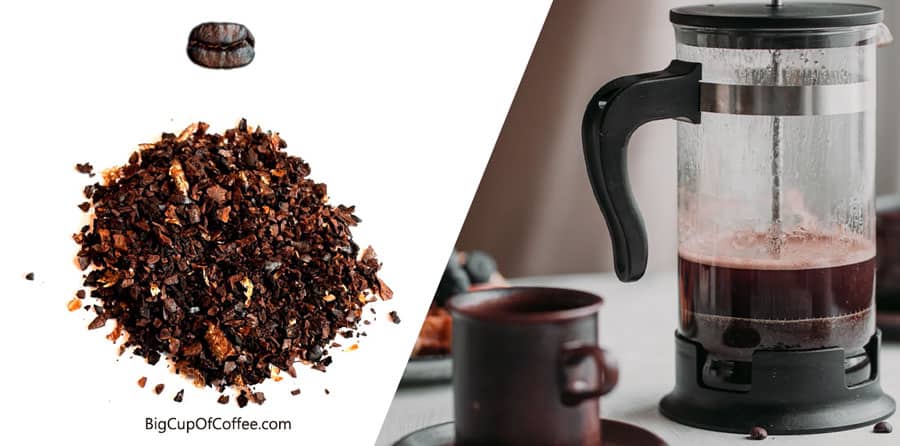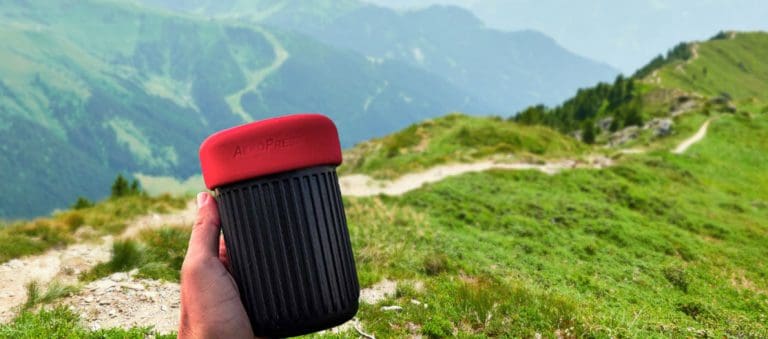What is Immersion Coffee Brewing? Discover the Different Methods for a Full-Flavored Cup
After years of making my own cup of joe with different brewing methods, I know full well how important extraction is for a full-flavored cup.
When it comes to extracting the rich flavors of coffee beans, immersion coffee brewing is a great option. In this article, I’ll explain to you what immersion brewing is and why it has become a trend in making java. I’ll also discuss the equipment involved and the steps to take to make your immersion brews at home.
Let’s jump right into it.
What is Immersion Coffee Brewing?
Immersion brewing is any brewing method that involves soaking coffee grounds in water to extract the desired flavor and aroma compounds. This method differs from other brewing techniques, such as drip coffee or pour-over brewing, because the coffee grinds remain submerged in the water for an extended period of time.
There are several factors that can influence the results of immersion brewing:
- Grind size
- Brewing time
- Water temperature
- Coffee-to-water ratio
- Chosen brewing method
Getting these variables right is crucial to achieving a delicious cup of coffee.
Essential Equipment for Immersion Brewing
Now to get started with immersion coffee brewing, you need a few tools. Here is the essential equipment you need to have if you want to perfect the process of immersion brewing:
- Grinder – Grind size plays a crucial role so having control over this variable is key. I recommend that you use a burr grinder for more uniform particle sizes and consistency. Blade grinders are not suitable for immersion brewing.
- Scale – Measuring out precise amounts of coffee and water will help ensure the accuracy of your ratios. Avoid guesswork by having a reliable scale at hand, like the Timemore Black Mirror Basic Plus.
- Water filtration system – It’s often overlooked but using high-quality filtered water ensures there are no lingering flavors, odors, or extra minerals which could negatively impact the taste of your coffee.
- Kettle – Immersion coffee brewing often requires the use of hot water, so a kettle equipped with temperature control is ideal.
- Stopwatch or kitchen timer – This will help you get accurate brewing times to ensure that your coffee sits long enough for full extraction.
- Brewing device of your choice – Finally, ready the appropriate immersion brewer for the method you’ve chosen.
Immersion Brewing Methods
There are several different ways to make coffee through the immersion brewing process. Here’s an overview of these brewing methods and how they differ from each other:
| Brewing Method | Grind Size | Steep Time | Coffee-to-Water Ratio | Water Temperature |
|---|---|---|---|---|
| French Press | Coarse | 4-5 minutes | 1:12 | 200° F |
| AeroPress | Fine | 1 minute | 1:6 | 175° F |
| Siphon | Medium | 2 minutes | 1:15 | 200° F |
| Cold Brew | Medium-Coarse | 18-24 hours | 1:8 | 68° F |
The above are the main immersion brewing methods, but there are a few less known ones as well, such as the Clever, Hario Switch, the Café Solo, and Turkish Coffee is considered immersion brewing by some as well.
French Press
The French Press, also known as a cafetière, is an immersion coffee brewing method that involves a plunger being pressed down on coffee grounds steeped in water. It was invented by Frenchmen Henri-Otto Mayer and Jacques-Victor Delforge in 1852.

The French Press is an affordable option that allows you to extract maximum flavor without much fuss, although there’s the issue of unwanted sediments getting into your cup.
Here are the steps to make French press coffee:
- Grind your beans coarsely – around the size of breadcrumbs.
- Add your desired amount of ground coffee.
- Pour the corresponding amount of hot water.
- Gently stir with a spoon.
- Place the lid and let steep for 4-5 minutes.
- Push down on the plunger to extract the coffee.
- Serve and enjoy
Factors for making French press:
- Grind size: Coarse grind
- Steep time: 4-5 minutes
- Coffee-to-water ratio: 1:12
- Water temperature: About 200° Fahrenheit
AeroPress
The AeroPress is another popular immersion brewing method that involves steeping coffee and water in a chamber before the plunger forces the extraction of coffee. Invented by Alan Adler in 2004 for a less acidic and bitter cup, the AeroPress is now a go-to method for a smooth and clean cup of coffee.

I personally love using my AeroPress because not only is it very easy and quick to use, but its compact design is also perfect for traveling.
Here are the steps to make AeroPress coffee:
- Grind your beans to medium fine for the Aeropress – coarser than espresso grind size but finer than the French Press.
- Place a paper filter in the cap, wetting it with hot water before discarding any excess liquid.
- Insert the plunger into the chamber placed on top of your mug or decanter
- Add your desired amount of grounds.
- Fill with hot water just below boiling point.
- Stir gently for about ten seconds.
- Let steep for around one minute.
- Press down slowly on the plunger to extract the brewed coffee.
- Serve and enjoy.
Factors for making AeroPress coffee:
- Grind size: medium-fine grind
- Steep time: 1 minute
- Coffee-to-water ratio: 1:6
- Water temperature: About 175° Fahrenheit
Siphon
The Siphon, also known as the Vacuum Pot or Syphon, is a unique immersion brewing method that involves siphoning coffee and water between two chambers to create a smooth and clean cup of coffee. The first patent was filed by the inventor Loeff of Berlin in the 1830s but it was the French woman Marie Fanny Amelne Massot who commercialized it in the 1840s.

When I got my first siphon coffee maker, I was intimated by the process. But I quickly realized it was simpler and easier than I thought and the coffee it yields is really worth it.
Here are the steps to make siphon coffee:
- Fill the bottom chamber with hot water just off the boiling point.
- On the upper chamber, add a filter soaked in water to the bottom.
- Put the upper chamber on top.
- Turn on the heat source.
- Once the water is pushed to the upper chamber by the heat, add your coffee.
- Gently stir and let sit for a minute and a half.
- Stir again and wait for another 30 seconds before turning off the heat source.
- Let the coffee get drawn down into the lower chamber.
- Once done, remove the upper chamber.
- Serve and enjoy.
Factors for making siphon coffee:
- Grind size: Medium grind
- Steep time: 2 minutes
- Coffee-to-water ratio: 1:15
- Water temperature: About 200° Fahrenheit
Cold Brew
Cold brew is a trendy method that requires the longest steeping time using cool water to create a refreshing and smooth coffee drink. Also called Kyoto-style coffee, this method is said to have been used in Japan since the 1600s.

Here are the steps to make a cold brew:
- Grind your beans for cold brew and add your grounds to your cold brew pitcher or container.
- Add filtered water.
- Cover with a lid or plastic wrap.
- Place it in the fridge or leave it on the kitchen counter for around 18 to 24 hours.
- After steeping, add more water or milk according to your preference.
- Serve and enjoy.
Factors for making cold brew coffee:
- Grind size: Coarse to extra-coarse grind
- Steep time: 18 to 24 hours
- Coffee-to-water ratio: 1:5
- Water temperature: Room temperature
Benefits of Immersion Coffee Brewing
So why opt for immersion coffee brewing? Here are a few benefits why you’d want to let your coffee grounds soak in water:
- It’s easy to learn and use, making immersion brewing accessible to coffee lovers of all levels.
- The method is scalable for different serving sizes – from single-cup servings with Aeropress or French Press to larger quantities for Cold Brews.
- Immersion brewing allows the extraction of flavorful compounds that result in a rich and full-bodied taste without losing out on the coffee’s natural oils and flavors.
- It’s budget-friendly. Unlike some other methods like espresso machines, the cost of equipment required for immersion brewing is relatively low.
Barista Tips for Immersion Coffee Brewing
If you want to take your immersion brewing game to the next level, consider these pro tips:
- Choose the right coffee beans: Opting for fresh whole beans and avoiding pre-ground helps preserve coffee’s natural flavors. Experiment with different origins & roast levels to find what works best for each method.
- Adjust your immersion time based on roast level: Lighter roasts will require less immersion time compared to darker ones; longer steep times may extract unwanted bitterness from dark roasted beans.
- Avoid Over-extraction or Under-Extraction: Achieving a balance is key while brewing; too long extraction could result in an over-extracted brew that is bitter, whereas an under-extracted, sour taste can leave you wanting more flavor in your cup. Keep experimenting till your preferred strength of caffeine fix and taste are both met.
Frequently Asked Questions (FAQs)
Below are answers to some of the questions that you may have regarding the immersion method in coffee brewing:
The main difference between immersion brewing and drip coffee is in the brewing process. Drip coffee drips water constantly onto a bed of coffee, while immersion brewing immerses the coffee in water for a certain period of time.
Yes, you can use any type of coffee for immersion brewing, but it’s important to remember that different types of coffee require different brewing times and methods.
This refers to the amount of time the coffee grounds are in contact with the water during the brewing process.
Conclusion
There you have it – everything you need to know about immersion coffee brewing. From the different methods to essential equipment and barista tips, you should now be ready to make your own full-flavored cup.
Whether you prefer a French Press or Cold Brew, don’t forget to experiment to match your brews to your taste preference. So grab your favorite beans and start exploring the flavors waiting to be discovered through immersion.
What is your favorite immersion brew method? Let me know in a comment below.








